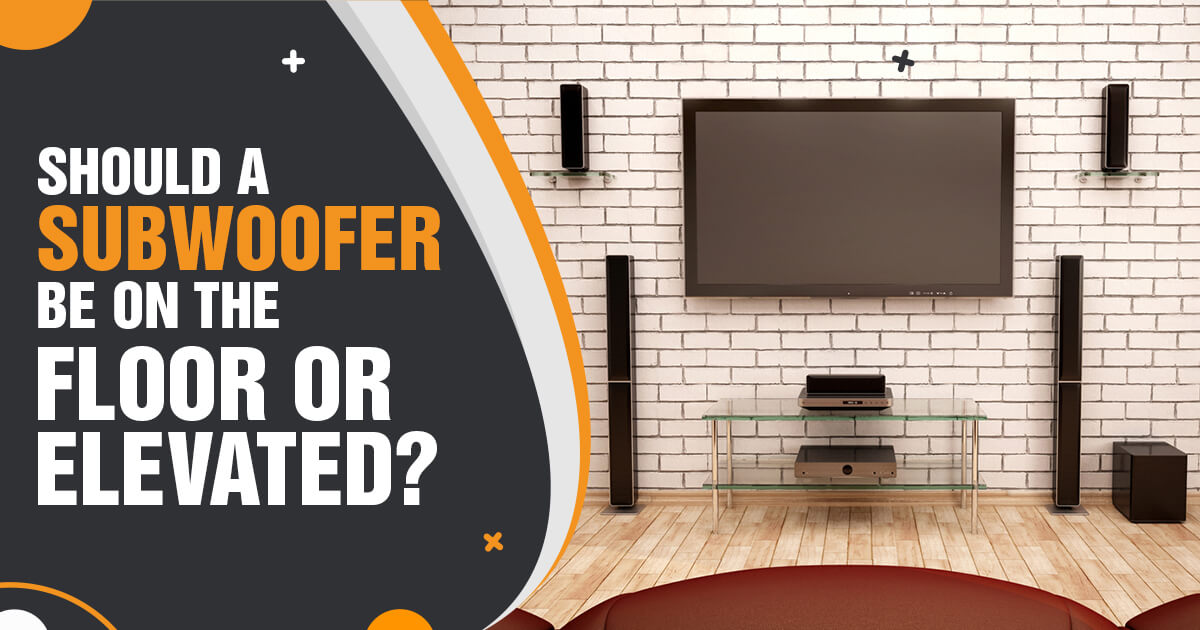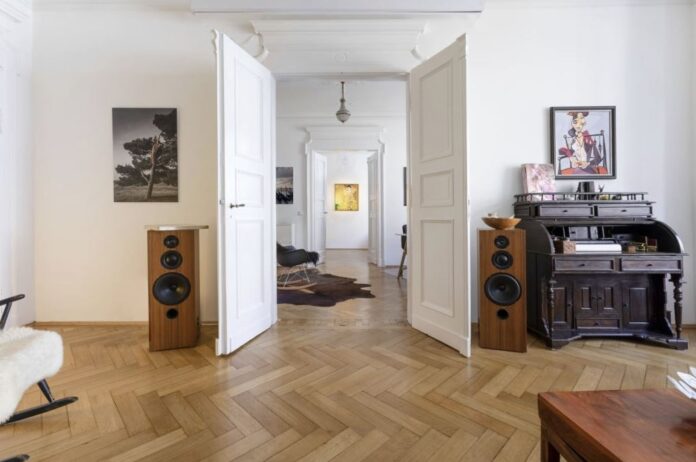Remember that time you cranked up your favorite song, expecting a heart-pounding bassline to shake the room, only to be met with a rather underwhelming rumble? This is the classic dilemma faced by many audiophiles: do powerful floor standing speakers truly need a subwoofer? The answer, as with many things in audio, is not a simple yes or no. It’s a question of finding the right balance between the sonic qualities of your speakers and your personal listening preferences.

Image: www.loyalaudio.com
The allure of floor standing speakers is undeniable. They boast a larger cabinet size and multiple drivers, offering impressive power and clarity. But their ability to reproduce the full spectrum of sound, particularly the deep, resonating bass frequencies, is often debated. This is where the subwoofer enters the picture, promising to deliver true seismic bass that can redefine your listening experience.
Diving Deeper into the Low Frequencies
The Essence of Bass
Bass frequencies, the foundation of any musical composition, play a crucial role in shaping the emotional impact of sound. They create a sense of depth, power, and realism, adding weight and texture to the music. While many floor standing speakers excel in reproducing midrange and treble frequencies, their capability to handle the deepest bass notes is where the conversation usually begins.
Floor standing speakers are typically engineered with woofers, large drivers designed to move air and produce low-frequency sounds. However, the physical limitations of the speaker cabinet and the driver itself can hinder their ability to deliver truly deep bass. This is especially true for speakers with smaller woofer sizes or those designed for a specific room size.
The Subwoofer’s Advantage
A subwoofer, a specialized speaker dedicated solely to reproducing low frequencies, is meticulously designed to handle the demands of deep bass. Equipped with a powerful driver and a larger cabinet, it can move significantly more air, resulting in more powerful and nuanced bass reproduction. The subwoofer’s dedicated function allows it to reach frequencies far lower than most floor standing speakers could ever dream of.
The integration of a subwoofer with your floor standing speakers can be transformative. The power and depth of the subwoofer complement the clarity and detail of your main speakers, creating a richer, more immersive listening experience. You’ll feel the music rather than just hearing it. Those impactful bass lines that felt underwhelming before will suddenly come alive, filling your room with a deep, resonant energy.

Image: thewowdecor.com
Is a Subwoofer Always Necessary?
While a subwoofer offers a significant sonic advantage, it’s not a universal necessity. Whether your floor standing speakers need a subwoofer depends on several factors, including:
- Speaker Size and Drivers: Larger floor standing speakers with larger woofer sizes often possess a more substantial bass response than their smaller counterparts.
- Room Acoustics: The size and shape of your room can significantly affect the way bass frequencies are perceived. A smaller room can trap bass frequencies, while a larger room might require a subwoofer to achieve a full-bodied sound.
- Personal Preference: Ultimately, the decision of whether or not to use a subwoofer comes down to your individual preferences. If you find yourself wanting more impact and depth in your music, a subwoofer could be a valuable addition.
The Benefits of a Subwoofer Symphony
While a subwoofer can dramatically enhance your listening experience, its benefits extend beyond just adding punch to your favorite tracks. A well-integrated subwoofer can:
- Reduce Strain on Your Main Speakers: By taking over the heavy lifting of bass reproduction, a subwoofer allows your main speakers to focus on handling the midrange and treble frequencies more effectively.
- Expand the Dynamic Range of Your Audio System: A subwoofer can significantly expand the dynamic range of your audio system, allowing you to experience a wider spectrum of sound, including those subtle bass notes often missed by smaller speakers.
- Enhance the Realism of Audio: The addition of a subwoofer brings a greater sense of realism to your music, movies, and games. You’ll feel the ground tremble during explosions, hear the deep, resonant rumble of a bass guitar, and experience the full depth of an orchestral performance.
Tips for Choosing a Subwoofer
Choosing the right subwoofer is critical to ensure optimal integration with your floor standing speakers and room acoustics. Here are some key factors to consider:
- Size: Subwoofers come in varying sizes, from compact models to behemoths designed for larger rooms. Consider the size of your room and your desired bass output when choosing a subwoofer. A larger room generally requires a larger subwoofer for optimal performance.
- Power Output: A subwoofer’s power output is measured in watts (RMS), determining its ability to produce loud and impactful bass. The required power output will depend on your room size and personal preferences.
- Frequency Response: Look for a subwoofer with a frequency response that extends to the lowest possible frequencies. A wider frequency range allows the subwoofer to reproduce more accurate bass notes.
FAQ: The Subwoofer Saga
Q: What are the different types of subwoofers?
A: Subwoofers can be categorized based on their design and placement:
- Down-firing: Subwoofers with a downward-facing driver, often used for placement under furniture.
- Front-firing: Subwoofers with a forward-facing driver, often placed in the corner of a room.
- Sealed: Subwoofers with a closed enclosure, offering tighter, more controlled bass.
- Ported: Subwoofers with a port or vent, offering louder and more extended bass.
Q: How do I adjust the subwoofer for optimal sound?
A: Most subwoofers have settings to adjust the crossover frequency, volume, and phase. Experiment with these settings to find the best balance between the subwoofer and your main speakers. You may also want to consult a calibration tool for more accurate adjustments.
Q: What are some of the best subwoofer brands?
A: Popular subwoofer brands include SVS, REL, JL Audio, and Klipsch. These brands offer a wide range of subwoofers to suit different budgets and listening preferences.
Do Floor Standing Speakers Need A Subwoofer
Conclusion
The decision of whether your floor standing speakers need a subwoofer is ultimately yours. However, by considering the factors discussed, you can make an informed choice that will enhance your listening experience. If you crave the full spectrum of sound, the power of a subwoofer can transform your audio system and elevate your enjoyment of music, movies, and games.
Are you ready to experience the true potential of your floor standing speakers with the help of a subwoofer? Tell us in the comments below!






